In understanding strange dog behaviors like snapping, many owners and experts have grappled with the question of why pit bulls snap. As with any dog, there is a chance they can snap, but this is usually because of a lack of training or socialization.
But what exactly causes a dog to become aggressive so suddenly? Do their tendencies usually come from instinctual behavior or another unknown factor?
Today, we’ll explore more reasons why these beloved animals might act out and discuss preventative measures, proper training, and management strategies you can use if your pittie shows signs of aggression. So strap in—let’s review everything that could be behind your pup’s snappy attitude!
What Makes Pit Bulls Unique: Exploring the Origins of the Breed and Its Traits
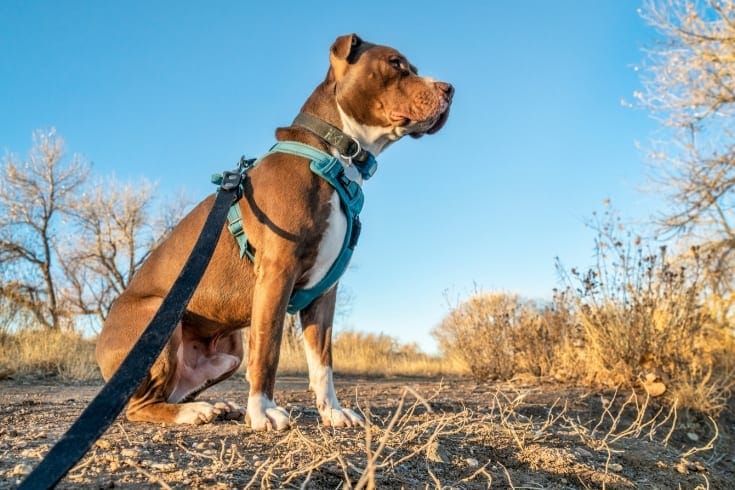
Pit bulls have quite the reputation, but let’s set the record straight. Contrary to popular belief, these pups don’t just snap for no reason. In fact, pit bulls are some of the most loyal and loving breeds out there. So why do they sometimes act out? It all boils down to their origins as fighting dogs.
They originally bred pit bulls for sports like bull-baiting and bear-baiting. Thankfully, those days are long gone, and today’s pibbles are better known for their friendly and affectionate personalities. With the right training and socialization, pitties make wonderful pets and lifelong companions.
I’ve had the pleasure of caring for this wonderful breed in many situations. While the fear is there for most people about aggression in pit bulls, it’s not the dog. Any dog, including pit bulls, can be a loving companion with proper socialization, training, and treatment.
The good part of history with pit bulls as nannies is interesting, shedding light on the side of this breed that only a few know & their maternal instincts. In the early 1900s, they often used pit bulls as caretakers for kids. Their gentle & patient nature made them excellent companions for kids, and many families relied on them to watch over their little ones.
What Causes a Pit Bull to Snap: Identifying Common Causes of Aggression in Dogs

While it’s true that occasionally a pit bull may snap, there are usually underlying factors that contribute to this behavior. Identifying these triggers is key to keeping our furry friends happy and healthy. So what are the common causes of aggression in dogs?
It could be anything from a lack of socialization to feeling territorial. Understanding these triggers can help us prevent instances of snapping and ensure that our pit bulls continue to be loving companions. Remember, if you treat your pit bull with kindness and respect, they will return the favor tenfold.
A few reasons why many breeds of dogs could snap at you, or anyone else include:
- Fear Aggression
- Pain or Injury
- Territorial Aggression
- Frustration/Lack of Training
- Feeling Threatened
- Lack of Socialization
- Learned Behavior
- Possession Aggression
- Dog-on-Dog Aggression
- Leash Aggression
- Medical Conditions
- Predatory Instinct (e.g., hunting dogs, sighthounds, etc.)
By understanding and recognizing these triggers, you can work towards preventing any dog from snapping. Your pit bull will be an amazing addition to your family with the right training and socialization.
Prevention & Management Tips: Understanding How to Reduce Risks for Snapping and Unacceptable Behavior in Pit Bulls
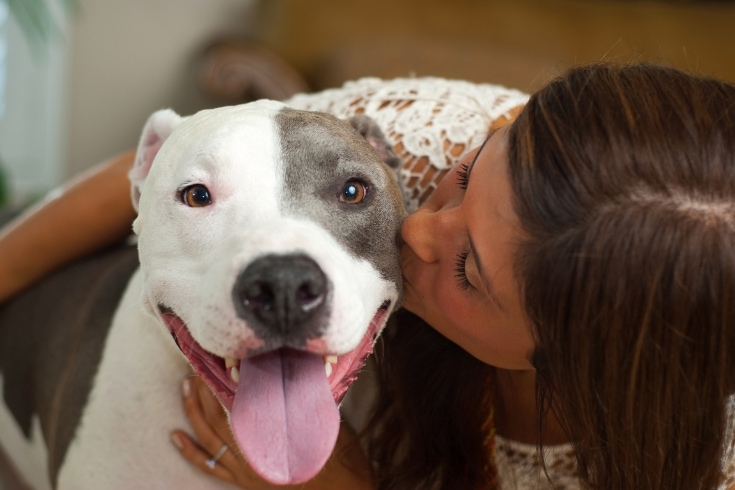
If you’re a proud pit bull parent, you know your pup comes with much love and loyalty. But with great affection comes great responsibility as pet owners of this breed, especially in preventing and managing snapping behavior. Luckily, there are some tips and tricks you can employ to help reduce the risk of your pit bull snapping.
So let’s ensure our pit bulls (a generic term for all bully breeds) are wagging their tails, not their tongues, and keep our furry friends happy and safe. Follow these rules to ensure you’re setting your dog up for success.
- Socialize your dog early on and expose them to different people, situations, and environments.
- Provide positive reinforcement by rewarding good behavior with treats or verbal praise.
- Redirect any negative behaviors with kindness and patience instead of harsh discipline.
- Understand your dog’s body language to know when they feel stressed or uncomfortable in a particular situation.
- Take the time to train your pup regularly to understand commands and cues that can help prevent snapping incidents from happening in the first place—e.g., “leave it” if they go after something dangerous or unfamiliar, “sit” before being given any food, etc.
- Ensure they get plenty of physical activity through walks, playtime, etc., to prevent any health conditions, as this will help keep them mentally and physically healthy, which can also aid in avoiding snapping issues because of boredom or pent-up energy/frustration.
- Spend quality bonding time together doing activities like obedience training that keep their mind engaged, such as nose work games for mental stimulation.
- Keep up regular vet visits to ensure no underlying medical concerns could cause pain or discomfort, leading to aggressive behavior (e.g., arthritis in older dogs).
- Finally, be patient and understanding with your pup—it takes time to build trust and create a strong bond between the two of you!
By following these tips, you can help ensure that your pit bull remains a beloved companion for many years.
Dog Communication Basics for Dog Owners: Knowing When Your Dog Is Trying to Tell You Something
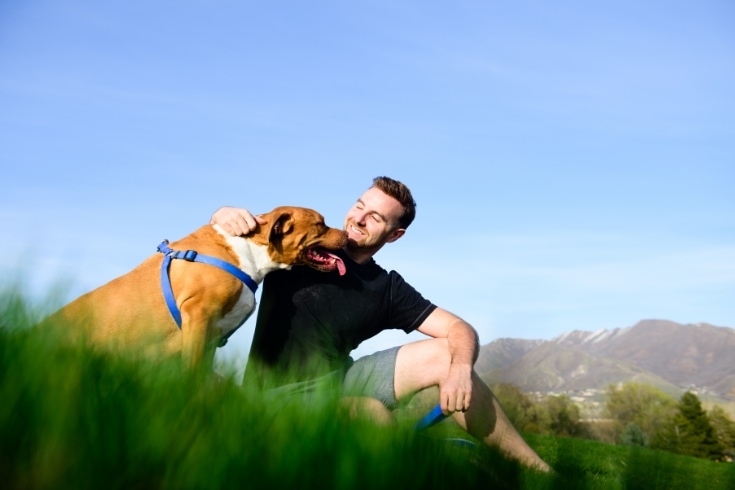
We all know our furry friends have a way of communicating with us that might seem mysterious. But don’t worry! I’m here to give you the inside scoop on dog communication basics. One of the essential things to understand is when your dog is trying to tell you something. And no, I’m not talking about the obvious barks about food or going outside.
I’m talking about the subtle cues that could tell you your pup is stressed or anxious. Watch out for things like licking their lips, yawning, or avoiding eye contact. These might seem insignificant behaviors, but they can tell you about your dog’s emotional state. And by being more aware of their signals, you can build a stronger bond with your furry friend.
The following are signs your dog may try to communicate something to you:
- Growling—A dog may growl to express displeasure or a warning about something making them uncomfortable in their environment.
- Tail Tucking—When a dog tucks its tail between its legs, it usually shows fear and discomfort.
- Furrowed Brow—Dogs often furrow their brows when feeling anxious, stressed, or threatened by something in their environment.
- Ears Back—When a dog’s ears go back flat against their head, this is another sign of distress or anxiety as the pup may make themselves appear smaller and less noticeable to avoid conflict with whatever is causing them stress.
- Licking Lips/Tongue Flickering—These more subtle signs can show your pup is feeling uneasy and uncertain about something around them. This is a common and normal reaction to stress.
- Biting/Chewing—If you notice your pup engaging in these activities more than usual while being exposed to different stimuli (e.g., people, new noises, etc.), it could mean they’re trying to cope with the unfamiliarity of the situation you’re in at that moment.
Training & Socialization: Teaching Your Pit Bull Good Habits and Proper Manners
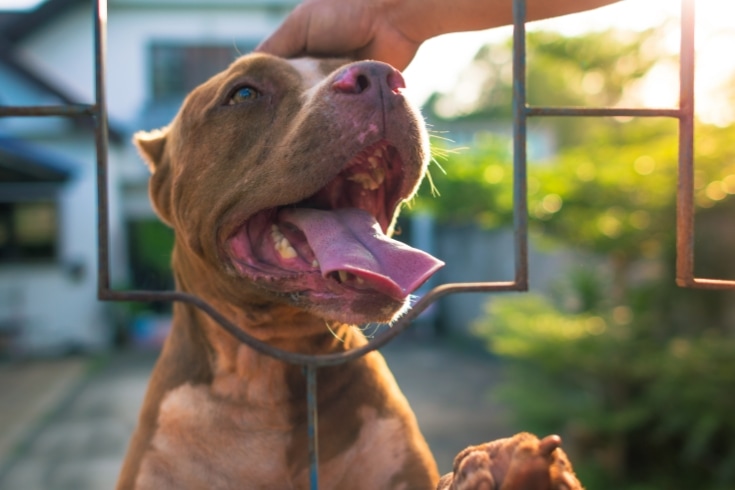
So you’ve adopted a pit bull and want to ensure they’re a well-behaved member of society—good on you! Training and socialization are key to ensuring your pit bull is a happy and obedient pup. Start with basic commands like “sit,” “stay,” and “come,” and reinforce positive behavior with treats and praise.
Take them to the park, let them play with other dogs, and expose them to different environments. The more socialized your pit bull is, the more comfortable they’ll be in new situations and the well-behaved they’ll be at home. So get to training, pit bull parent, and watch as your four-legged friend becomes the envy of every dog park in town.
Most people are unfamiliar with how to socialize a dog and are more familiar with training one. So, I’ll go through some steps below to help you ensure you’re socializing properly. I’d like to add that socializing is lifelong, not just one-and-done. But the better the foundation you give your dog initially, the better you’ll be later.
- Start with basic commands like “sit,” “stay,” and “come.”
- Reinforce positive behavior with treats and praise.
- Take them to the park or let them play with other dogs.
- Expose them to different environments.
- Make sure they’re comfortable in new situations by being gentle, patient, and encouraging.
- Offer rewards for exploring unknown places and meeting new people.
- Allow your pup to lead the way when introducing them to something unfamiliar, boosting their confidence.
- Have a few friends over frequently so your dog can get used to strangers in its home environment.
- Encourage healthy interactions between dogs of all ages, sizes, genders, etc.
- Attend obedience classes to practice skills such as walking on a leash properly and practicing appropriate behavior around other dogs.
By following these steps, you’ll give your pup the best chance at being a well-behaved and socialized member of society! And this will also help to strengthen your bond with them.
Professional Help: When Should You Seek Help From an Animal Behavior Expert?
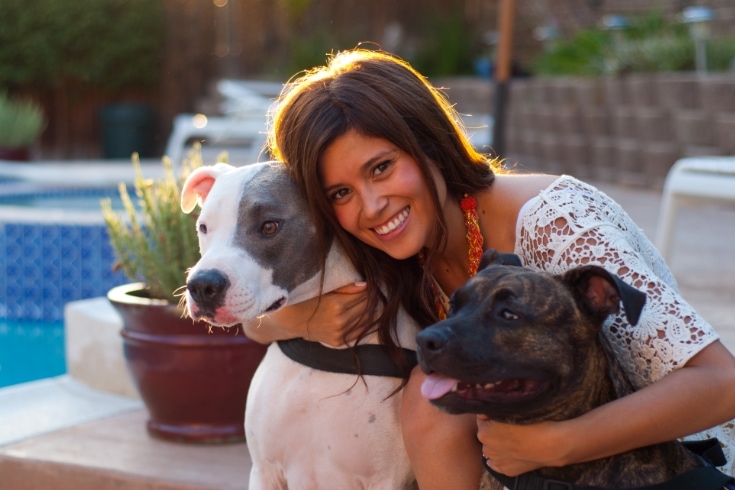
As much as we’d love it if our furry friends could just tell us what’s bothering them, sometimes they need extra support from a professional with behavioral issues. So when should you seek help from an animal behavior expert?
Well, if your cat is giving you sass, your dog is tearing up your furniture, or your parrot is throwing a tantrum, it might be time to call in the big guns.
These experts can help identify the root of the problem and offer solutions to get everyone back on track. Some specialize in aggression, so if that’s something you need to have, make sure you ask about that upfront.
And who doesn’t want an excuse to spend more time with their pets and learn some cool tricks along the way? Don’t wait until your home is a mess—seek professional help!
FAQs
Do Pit Bulls Snap at Their Owners?
No, pit bulls rarely snap at their owners. In fact, with proper training and socialization, they are often very obedient pets that are more than happy to show off their gentle nature. Pit bulls can be highly trainable and respond well to positive reinforcement, such as treats and praise.
At What Age Do Pit Bulls Become Aggressive?
Pit bulls do not automatically become aggressive when they reach a certain age. Many factors go into aggression, training, and socialization, which are critical to avoiding aggression in any dog.
How Can You Tell if a Pit Bull Trusts You?
Trust is a key component of any relationship, including the one you have with your pit bull. There are many ways to tell if your pup trusts you. For example, when a dog loves and trusts their owner, they will often follow them around from room to room or seek physical contact like cuddles or belly rubs. If you’ve been training for a while now and can get your dog to listen to commands without hesitation, then that’s another indicator of trust between the two of you.
Conclusion
All pit bulls come with unique challenges and needs, and it can take time and energy to address them effectively.
By getting educated about the breed, learning to recognize and respect signs of aggression, providing plenty of training and socialization opportunities for your pet, monitoring their behavior closely, and seeking professional help when necessary, you will have all the tools you need to raise a healthy, well-behaved pit bull.
Of course, every pet has its own character, so understanding your dog’s specific needs on an individual level is key to helping them grow into confident adults who get along well with people and other animals. With patience, guidance, and lots of love & care, your beautiful pit bull can lead a happy life full of positive experiences!
